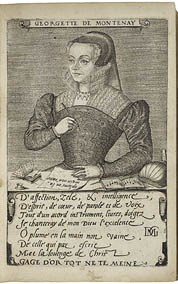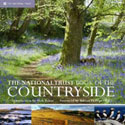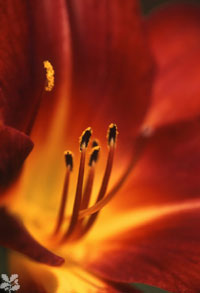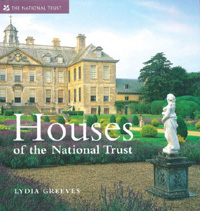Roosevelt and Churchill on Bond Street, since 1995
Victoria here, trying to sort out pictures from my last few trips to London, in an attempt not to feel too sorry for myself because I am not crossing the pond this spring. I found a few shots I thought I’d share, as I don’t think I have posted them before. The sculpture above is frequently photographed with tourists perched on the knees of the men. The bronze figures of U.S. President Franklin D. Roosevelt and Prime Minister Winston S. Churchill were sculpted by Lawrence Holofcener. They are located where Old Bond Street becomes New Bond Street in Mayfair.
Charing Cross
This Victorian recreation of the Eleanor Cross was erected in 1865 near the location of the original placed there by King Edward I in the 13th century. It was one of twelve crosses which marked the resting places of the body of his wife, Eleanor of Castile, who died in 1290. She was carried to London for burial in Westminster Abbey over a nearly-two-week period. The Charing Cross stands in front of the railway station of the same name, just off Trafalgar Square. The original position of the Eleanor Cross is now marked by an equestrian statue of King Charles I looking down Whitehall past the site of his beheading.
Not far away is this house, built by Robert Adam, and lived in by several prominent Londoners. Its address is 1-3 Robert Street, in part of the Adam Brothers’ development of Adelphi Terrace.
Nearby and also part of the same neighborhood is the home of the RSA, Usually called the Royal Society of Arts. There website is here. The building, designed by the Adams, is classically beautiful.
Below is the plaque placed on the building. The RSA is still an active part of British intellectual and scientific life with more than 27,000 fellows and frequent programs, many open to the public. Various other societies, such as the Royal Academy of Arts, is an 18th century spin-off (or whatever they called them in those days).

I had not explored this area of London before, between The Strand and the River, sort of between Charing Cross station and the Savoy Hotel. The Adams Brothers built a number of buildings here, culminating in their Adelphi Terrace, an ambitious plan for numerous terrace houses above wharves along the Thames. For various reasons, the development never reached full success and in the 1930’s most of it was demolished to build a large gray (and rather grim) semi-Art Deco building for offices, etc. now known as the New Adelphi Building. A good account, accompanied by a map of the district, can be
found here. The drawing below shows what the Adelphi Terrace looked like in its heyday.
Returning to walk down the Strand, I often stopped near my hotel (The Strand Palace, nicely refurbished) for refreshment at The Wellington, named after our Favorite Duke. Located at 351 The Strand, it is a popular spot for drinks, dinner, and post-theatre entertainment.
Continuing eastward I came to Somerset House, a building with an interesting history and a continuing role in contemporary London. In the courtyard below was an installation by the celebrated Chinese Artist Ai Weiwei, who was threatened with imprisonment in his home country for his dissident activities. Hard to distinguish in the pictures is Circle of Animals/Zodiac Heads which has also been shown in New York City. The installation recreates 18th century figures near Beijing which were damaged by the British and French during the Opium Wars. Ai’s message accompanies the artwork: “Without freedom of speech there is no modern world, just a barbaric one.”
Somerset House
The present Somerset House was begun in 1776 to designs by architect Sir William Chambers in a neo-classic style. Originally on the bank of the Thames, it was altered and expanded in the Victorian era with the construction of the embankment and several new wings.
In the 16th century, the north bank of the Thames was lined with the mansions of nobles, and on this site a great house had been constructed for Edward Seymour (c. 1500-1552), 1st Duke of Somerset, the Lord Protector during the reign of Edward VI (1537-1553). As uncle of Edward VII (Somerset was brother of Jane Seymour ([.1508-1537]), Somerset tried to impose his will upon an unruly group of courtiers fighting over the spoils of the kingdom after Henry VIII died in 1547. Edmund Seymour ended up on the losing side of court intrigues and lost his head. Somerset House, his mansion, was used to house several queens during the Stuart period, being remodeled over and over again.
Acknowledging the need for a fine public building in London, on the continental model, the government of George III had the old buildings demolished for the huge new structure to house government agencies and offices, learned societies, and parts of the Admiralty; before the river bank was altered in the 19th century, large arched watergates allowed barges and small vessels direct access from the river.
Damage from WWII was repaired in the 1950’s, and various restorations and remodeling continue to the present. For 150 years, until about 2005, the Registrar General of Births, Death, and Marriages in Somerset House was the place one had to go to obtain these records for England and Wales. Also familiar to UK residents might have been the Inland Revenue offices, from 1849 to 2009, now moved to Bush House.
Entrance to the Courtauld Gallery, Somerset House

In the 1990’s, The Courtauld Institute of Art and the Courtauld Gallery moved into the section formerly given to the Royal Academy. The website is here. Their very fine collection, particularly strong in 19th century works, can be viewed today in the same setting as the one in which our ancestors viewed the annual Summer Exhibition.
Above is the staircase to the galleries today. You will be glad to hear that a lift will let you avoid climbing up — or down — all those steps. Or running into the situation pictured below.
Rowlandson, The Stare Case, The British Museum
.
The RA and its exhibitions are now located in Burlington House, Piccadilly.
Above, workers install a large sculpture in the courtyard of the Royal Academy in 2009. Below, it is completely assembled.
Triton III, by Bryan Kneale, RA, b. 1930
Other recent changes at Somerset House include an open terrace for cafes, art installations, concerts, and displays of dancing fountains; in the winter, this area is a public ice rink, where once civil servants parked their cars. Other public areas show the building’s history and the state barge belonging to the Lord Mayor.
In the view below, the facade of Somerset House is seen on the right and in the distance, the church is St. Mary-le-Strand, which now sits in a traffic island with the street flowing around it.
Another period view of The Strand, with St. Mary-le-Strand
Unfortunately, all my photos of the church appeared to be more of buses, lorries, and autos than the facade, so the one below is borrowed.
The interior of the church is baroque, reflecting the study trip of the architect James Gibbs (1682-1754) to Italy. Gibbs designed churches (e.g. St. Martin-in-the-Fields), hospital and university buildings (Radcliffe Camera, Oxford) and country houses throughout his career.
Just east of St. Mary-le-Strand, The Strand becomes Fleet Street, a stretch less known for art museums and churches than press magnates.
Soon, I will share with you some snaps I took while walking around St. James, London.
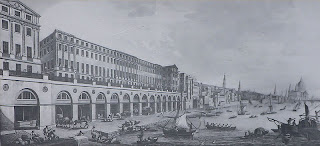







.jpg)
